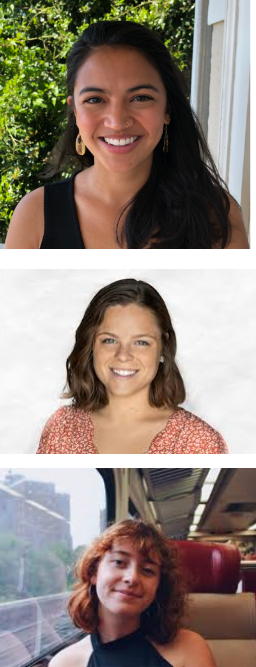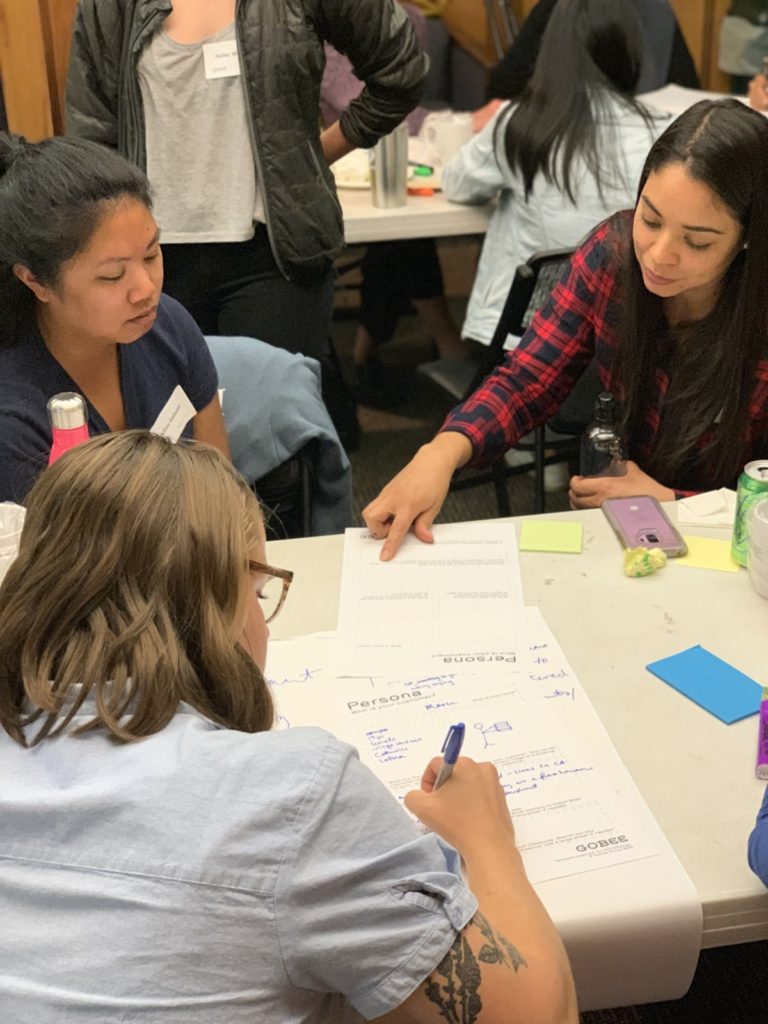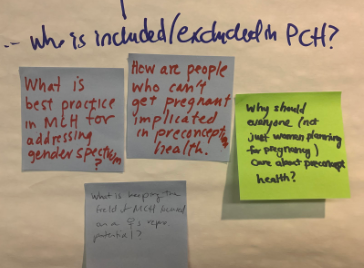
Cheralynn Corsack, MPH;
Hailey Windsor
Natasha Borgen is entering the 2nd year of the Master’s in Public Health, Maternal, Child, and Adolescent Health program at UC Berkeley, and Cheralynn Corsack recently graduated from the same program. As Student Event Coordinators they planned an event that was student-driven and of interest to their MCAH peers last Spring. They were joined by Hailey Windsor, an undergraduate student majoring in Human-Centered Design and a Fung Fellow, who helped facilitate the event. The three of them are excited to share what they learned from the experience with the larger MCH community, especially as it relates to MCH Core Competency 10.
The problems we hope to tackle as public health practitioners, from closing racial disparities in maternal mortality or guaranteeing access to quality family planning and reproductive health care to all, to expanding health access to immigrant communities, are too complex to be solved by just one discipline. Yet, too often we work and learn in the bubble of our chosen silos, without engaging people and experts from different fields that not only intersect with the communities we serve but also can support the interventions we hope to create.
When we had the opportunity to put on a student-led event, we wanted to plan something that was challenging to experience or learn through our MCAH curriculum or classes offered at the School of Public Health and that we could use in our work beyond the event. Our MCAH student peers eagerly shared input on topics they wanted to learn about, and we ultimately landed on planning a Human Centered Design Workshop.
We asked Dr. Jaspal Sandhu to lead the workshop, and he expressed the importance of bringing together people from different disciplines, life experiences, perspectives, and identities to get the most out of the Design process. To promote participant diversity at the event, we advertised the workshop across our campus through our program partners. As a result, our event included two undergraduate students, ten master-level students, two doctoral-level students, two postdoctoral fellows, four staff members, and one faculty member. The displicines from which the participants represented included public health, education, economics, public policy, business, online education, and environmental design. The workshop was co-led by Dr. Cassondra Marshall who offered the MCH working topic, or “problem” for the day: How might we reframe preconception health to be relevant and useful to real people?
With this question driving the workshop, Dr. Sandhu and Hailey Windsor, guided us through an abbreviated version of the Design process which consisted of three activities: framing, personas, and concept generation. We were encouraged to join groups that allowed participants to work with individuals from different personal and professional backgrounds. Throughout the workshop facilitators inspired creative confidence where quiter voices could be elevated where we were reminded that there were no “dumb ideas”, to let ideas flow freely, and to trust and respect each other.
During the first activity, we worked in our teams using sticky notes to interrogate the initial question. What does preconception health mean? Who does it include or exclude, and to whom is it relevant? How does one practice good preconception health? Where do you go for support or information about it? As we plastered our ideas to the wall and grouped them together as key themes emerged, the question evolved.
Each team presented new, reframed questions, like “How might we reframe preconception health to be inclusive and center around the current + future health of the community using stage-of-life relevant messaging?”
During the second activity we created hypothetical personas that enabled us to gain an empathetic perspective of the problem. Personas included teens, college students, doctors, families, and middle-aged women. Given the nature of the workshop, community engagement was not feasible. However, this activity allowed us to explore the population in question.
Next, with our new questions and personas in mind, we underwent a round of rapid ideation. We brainstormed as many ideas as we could in a limited amount of time and then selected an idea to pitch as a group. These final ideas were presented with an accompanying storyboard. The final concepts included funding “life counselors,” people meant to guide young adults in planning out their careers and personal lives, at universities and a docu-series on life planning and outcomes illustrating different, valid paths.

Though we had very little exposure to Human Centered Design before this workshop, over the course of half a day, we learned that Human Centered Design is a collaborative approach to problem-solving that not only encourages interdisciplinary team-work, but relies on it. It is a creative process that is grounded in empathy and puts people first; it is a process that is rooted in deep learning through continuous inquiry and a willingness to learn through failure. The diverse representation on each team challenged us to look at the proposed situation through different perspectives. This helped us to not only think about how to solve a problem in different ways, but also how to ask the right questions. We believe that Human Centered Design is a powerful tool that can and should be used in public health to promote interdisciplinary/interprofessional team-building, social innovation, and systems change.
-Natasha, Cheralynn, and Hailey
This event was co-sponsored by the Center of Excellence in Maternal, Child, and Adolescent Health and the Wallace Center in Maternal, Child, & Adolescent Health



